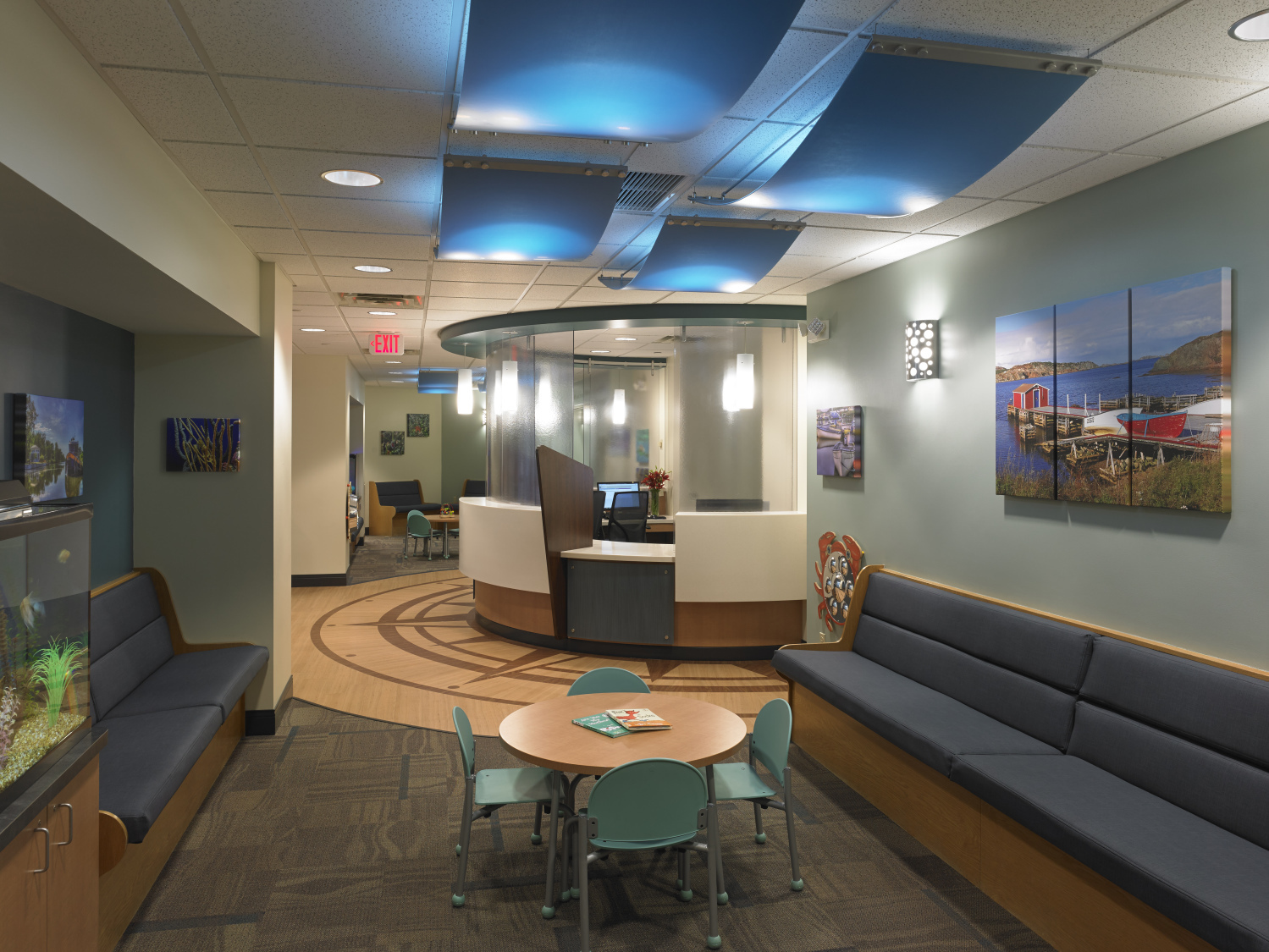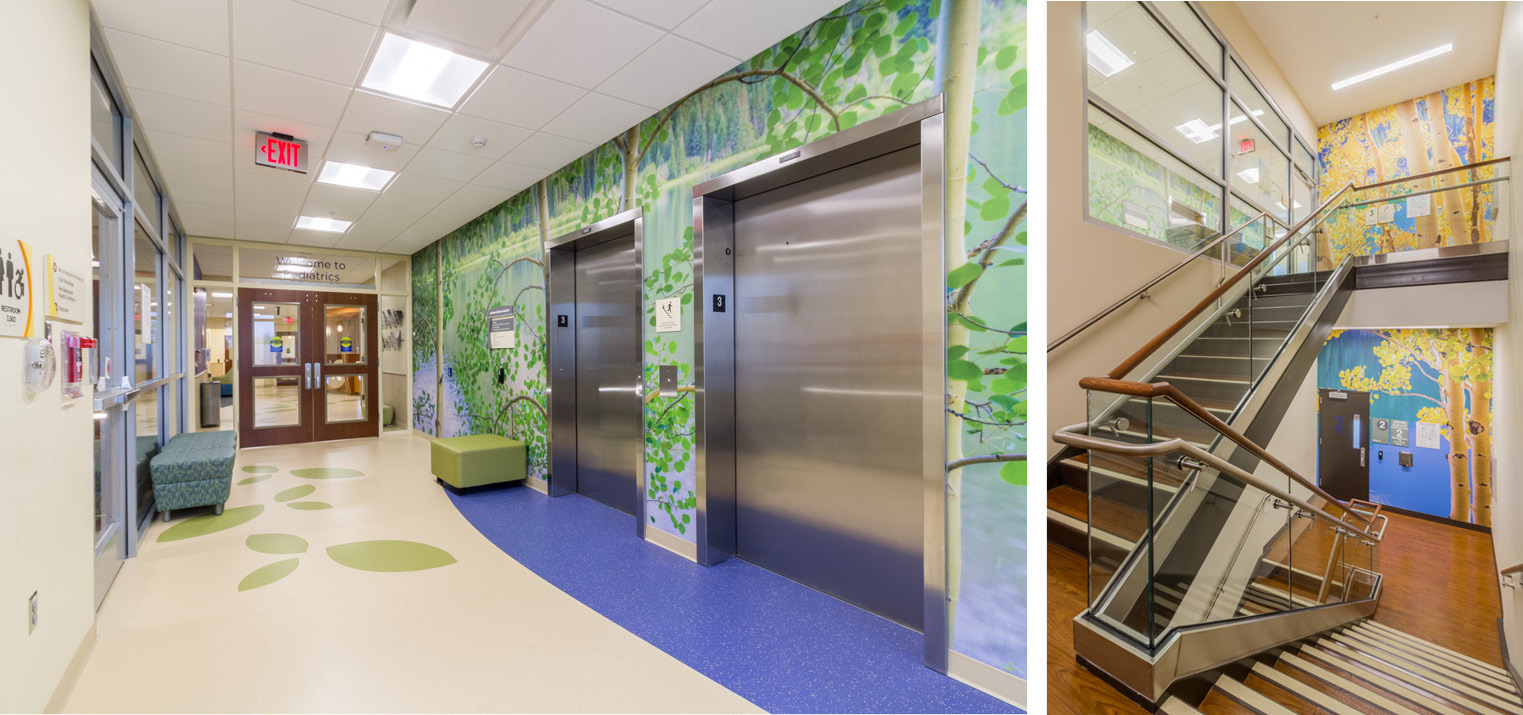When a sick child enters a hospital, the traditional patient pathways for treatment, procedures, and life-saving interventions can often feel overwhelming. Creating healing spaces that emotionally support young patients―and their families―during their medical journeys is the foundation of strategic healthcare design.
In terms of “look and feel,” the evolution of pediatric healthcare environments has been substantial over the years. What started out as cold, sterile atmospheres with plain, white walls and glaring, fluorescent lights eventually became brighter, more “kid-friendly” spaces with a cacophony of bold colors and cheerful graphic patterns.
However, while a more “frenetic” design aesthetic did a better job stimulating young patients, the overcorrection may have started to do more harm than good—especially for children who are prone to hyperactivity, anxiety or autism spectrum disorders.
Modern-day pediatric hospitals need to strike the perfect balance. They must engage, but not overwhelm; support healing, without being clinical; and most importantly, bolster inclusivity without sacrificing compassionate care.
Nature’s Perfect Palette
Imagine the soft, serene tones of the seashore, the earthy greens and browns of the forest, the lively hues of a flowery garden, or the warm, dusty pastels of a desert vista; these beautiful, balanced palettes found in our natural world are both soothing and restorative. Pediatric healthcare environments should incorporate nature’s color schemes to help patients feel comforted and appropriately stimulated during their stay.

Pediatrics Offices in Rochester, New York
The Comforts of Home
Inviting familiar, “home-like” elements into pediatric patient rooms often helps ground the space for any child in need of care. Window treatments, wall art, TV’s, device charging ports, and controllable lighting and temperature are all recognizable, residential amenities that bring relief and convenience into the “unfamiliar” hospital setting.
Additionally, providing amenities for a child’s immediate family is equally as important. Family and close friends should be greeted with dedicated areas to eat, sleep and recharge so they can be their best selves for the patient.
Behavioral Health Designs
Pediatric healthcare environments must cater to children of all physical and developmental abilities. As such, critical child safety measures should be incorporated into these spaces, including the minimizing of sharp objects, rounding exposed corners and securely mounting furniture where applicable.

Further bolstering inclusivity, strategic lighting design plays a key role in comforting patients, especially neurodiverse children. Instead of bright, glaring or buzzing lights that may cause anxiety, interior rooms should leverage circadian lighting, natural daylight or other dimmable, noiseless options to mitigate potential negative reactions.
Expanding Health’s Reach
Thoughtful care and treatment shouldn’t be limited to a pediatric patient’s room―common hospital areas should also have special design considerations for alleviating stress and promoting healing. Incorporating outdoor elements like gardens into lobbies and corridors can help elicit feelings of optimism and tranquility in an otherwise chaotic, high-stress environment.

Children, although highly resilient, are still fragile members of our society in need of protection and compassionate care. Protecting both their physical and psychological well-being in the built environment is a critical responsibility—one that has lasting impacts on their ability to heal.
As innovation in medical treatments continues to evolve, so will our approach to supporting the ever-changing needs of pediatric patients through evidence-based design.

